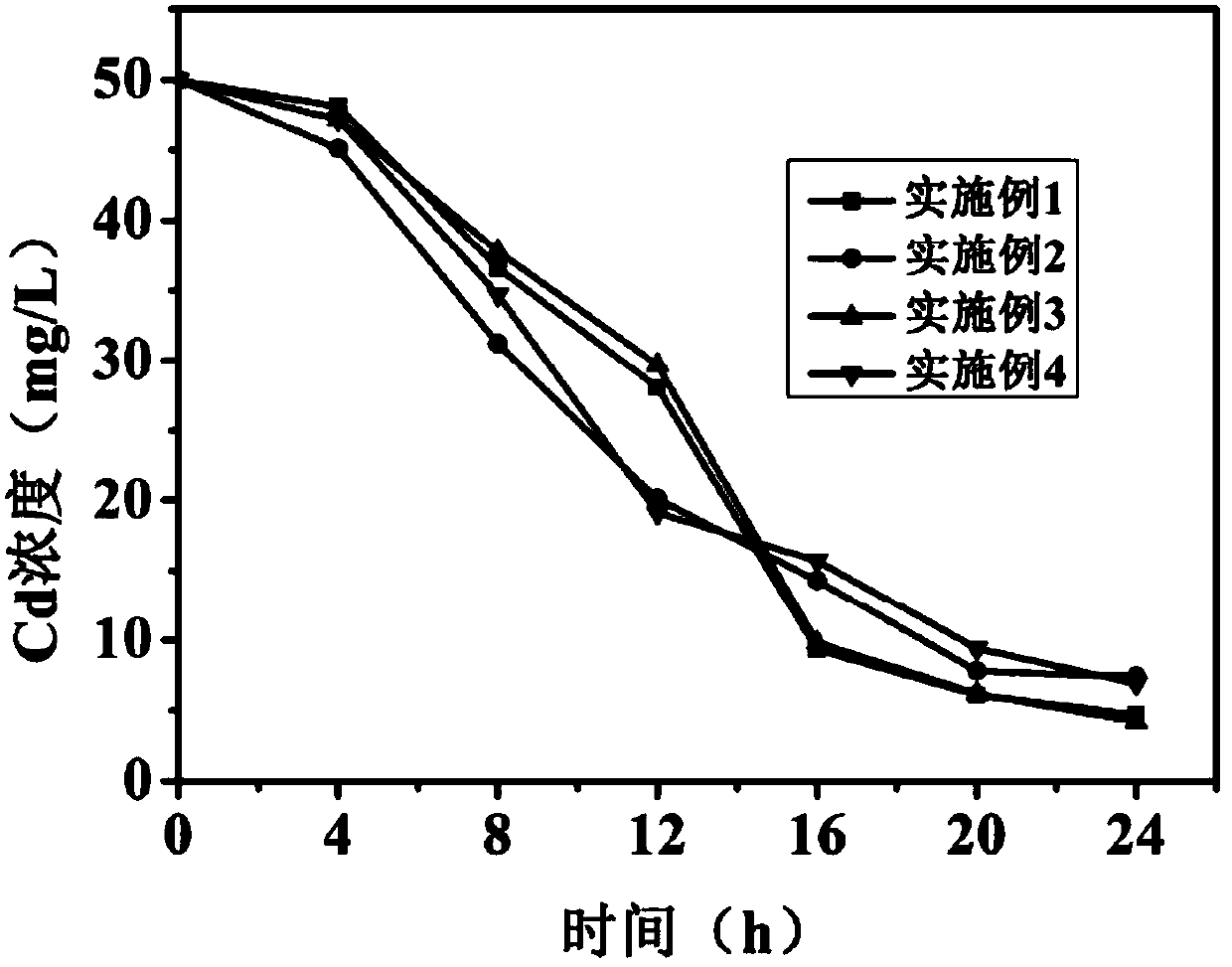Synergistic removal of sulfate and cd(ii) wastewater by sponge iron and microorganisms
A sponge iron and sulfate technology, applied in chemical instruments and methods, biological water/sewage treatment, water pollutants, etc., can solve the problems of low unit microbial content, poor sedimentation performance, loss of bacteria, etc., and achieve strong reducibility. , good removal performance, strong electrochemical enrichment effect
- Summary
- Abstract
- Description
- Claims
- Application Information
AI Technical Summary
Problems solved by technology
Method used
Image
Examples
Embodiment 1
[0040] A method for removing sulfate and Cd(II) wastewater in cooperation with sponge iron and microorganisms, comprising the following steps:
[0041] (1) Preparation of sponge iron
[0042] Under the conditions of carbon content (mass ratio of simple carbon powder to iron slime) 1:2, reaction temperature 1200°C, and reaction time 25 minutes, iron slime was used as raw material to calcinate to prepare conventional sponge iron solid. Activate with dilute hydrochloric acid to prepare a sponge iron solution with a concentration of 0.6 g / L, which is designated as reaction solution A.
[0043] (2) Preparation of sulfate reducing bacteria SRB
[0044] A kind of sulfate-reducing bacterium—Desulfovibrio (Desulfovibrio; Desulfovibrio desulfurization subspecies) purchased from China General Microorganism Culture Collection Management Center (Chaoyang District, Beijing, China, zip code 100101, number 1.3469) was selected for 2 rings, and the It was transferred to 40ml of Desulfovibrio...
Embodiment 2
[0056] A method for removing sulfate and Cd(II) wastewater in cooperation with sponge iron and microorganisms, comprising the following steps:
[0057] (1) Preparation of sponge iron
[0058] Under the conditions of carbon content (mass ratio of simple carbon powder to iron slime) 1:2, reaction temperature 1200°C, and reaction time 25 minutes, iron slime was used as raw material to calcinate to prepare conventional sponge iron solid. Activate with dilute hydrochloric acid to prepare a sponge iron solution with a concentration of 0.4 g / L, which is designated as reaction solution A.
[0059] (2) Preparation of sulfate reducing bacteria SRB
[0060] A kind of sulfate-reducing bacterium---Desulfovibrio (Desulfovibrio) purchased from China Common Microorganism Culture Collection Management Center (Chaoyang District, Beijing, China, Zip Code 100101, No. 1.3469) picks 2 rings, transfers it in 40ml nutrient solution, Cultivate in the dark at 35°C for 5 days, use the proliferation medi...
Embodiment 3
[0072] A method for removing sulfate and Cd(II) wastewater in cooperation with sponge iron and microorganisms, comprising the following steps:
[0073] (1) Preparation of sponge iron
[0074] Under the conditions of carbon content (mass ratio of simple carbon powder to iron slime) 1:2, reaction temperature 1200°C, and reaction time 25 minutes, iron slime was used as raw material to calcinate to prepare conventional sponge iron solid. Activate with dilute hydrochloric acid to prepare a sponge iron solution with a concentration of 0.3 g / L, which is designated as reaction solution A.
[0075] (2) Preparation of sulfate reducing bacteria SRB
[0076] A sulfate-reducing bacterium—Desulfovibrio bacilli purchased from the China General Microorganism Culture Collection Management Center (Chaoyang District, Beijing, China, Zip Code 100101, No. 1.3469) was selected for 2 rings, transferred to 30ml of nutrient solution, and incubated at 35°C Cultivate in the dark for 3 days, use prolif...
PUM
 Login to View More
Login to View More Abstract
Description
Claims
Application Information
 Login to View More
Login to View More - R&D
- Intellectual Property
- Life Sciences
- Materials
- Tech Scout
- Unparalleled Data Quality
- Higher Quality Content
- 60% Fewer Hallucinations
Browse by: Latest US Patents, China's latest patents, Technical Efficacy Thesaurus, Application Domain, Technology Topic, Popular Technical Reports.
© 2025 PatSnap. All rights reserved.Legal|Privacy policy|Modern Slavery Act Transparency Statement|Sitemap|About US| Contact US: help@patsnap.com

